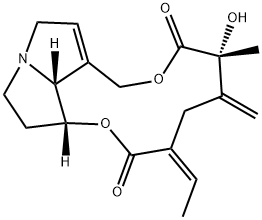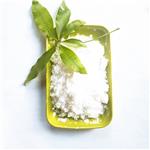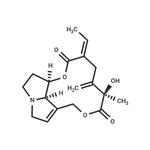Seneciphylline, a pyrrolizidine alkaloid, one of the main components of Chinese medicine herb Tusanqi, which is a reason of the hepatic sinusoidal obstruction syndrome (HSOS). In addition, experiments on rats have shown that seneciphylline had adverse effects on the development and organic morphodifferentiation of embryos, thus the pregnant people exposed to Hebra may get potential risk on the fetus.
White crystalline powder, soluble in methanol, ethanol, DMSO and other organic solvents, Derived from the whole plant or root of Gynura segetum (Lour.) Merr (Ju Sanqi).
Seneciphylline is a minor constituent of S. jacobaea, which has been used as a medicinal herb in Europe. It has the effect of coagulation and hemostasis.
Seneciphylline is a pyrrolizidine alkaloid with the potential to affect hepatic drug metabolizing enzymes in rat cells.
Seneciphylline is a naturally occurring plant toxin, which is employed to defend the plant against herbivore and insect attacks.
Seneciphylline may be used as an analytical reference standard for the quantification of the analyte in feed samples and traditional Chinese herbal medicines using different chromatography techniques.
ChEBI: LSM-2853 is a citraconoyl group.
Reacts slowly with atmospheric oxygen. . Insoluble in water.
SENECIPHYLLIN is readily hydrolyzed with alkali; SENECIPHYLLIN reacts readily with oxidizing agents .
Seneciphylline and aflatoxin B. may be of greater importance as a cause of human disease than the presently known outbreaks of poisoning would indicate.
SYMPTOMS: Symptoms associated with this compound include abdominal pain, nausea and diarrhea, emaciation, intestinal edema and congestion of the liver. ACUTE/CHRONIC HAZARDS: Very toxic. (NTP, 1992)
Flash point data are not available for SENECIPHYLLIN, but SENECIPHYLLIN is probably combustible.



